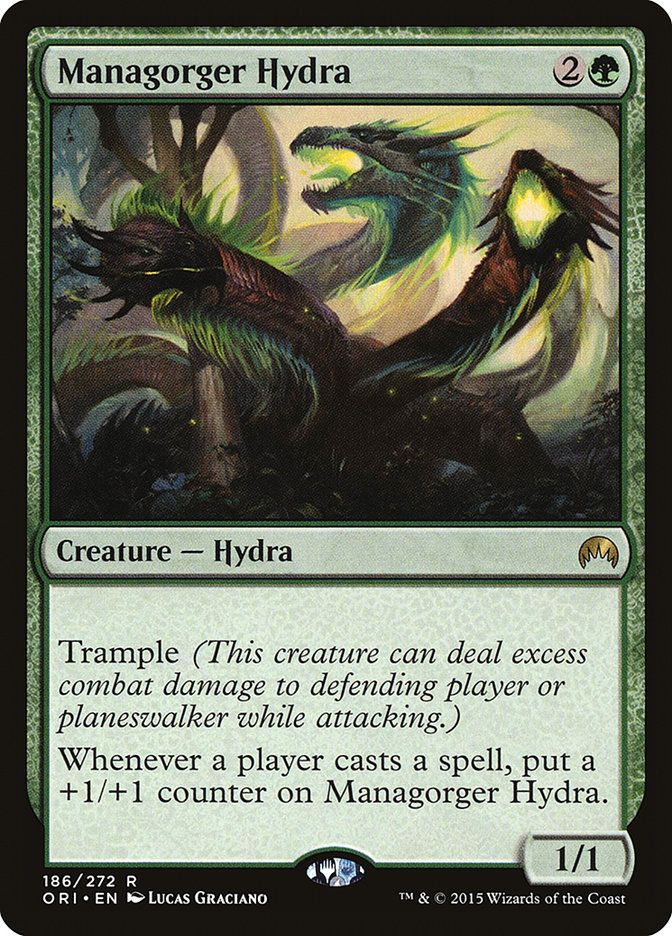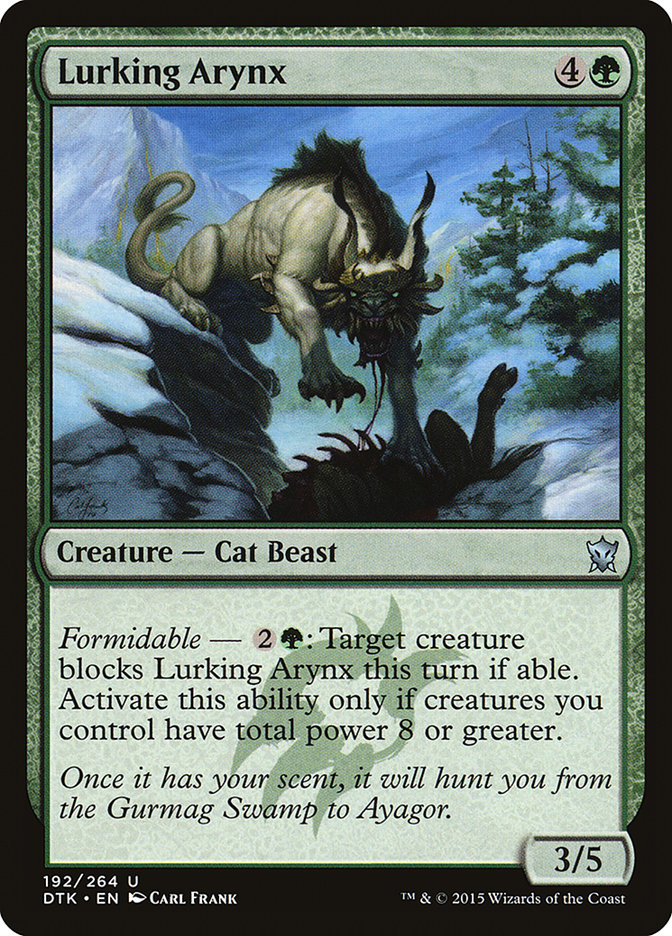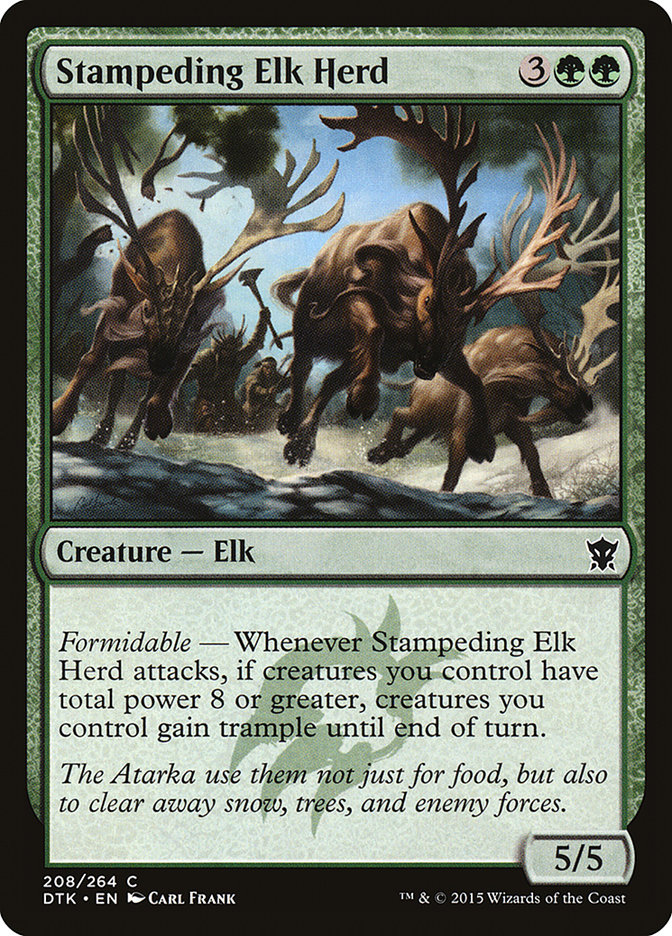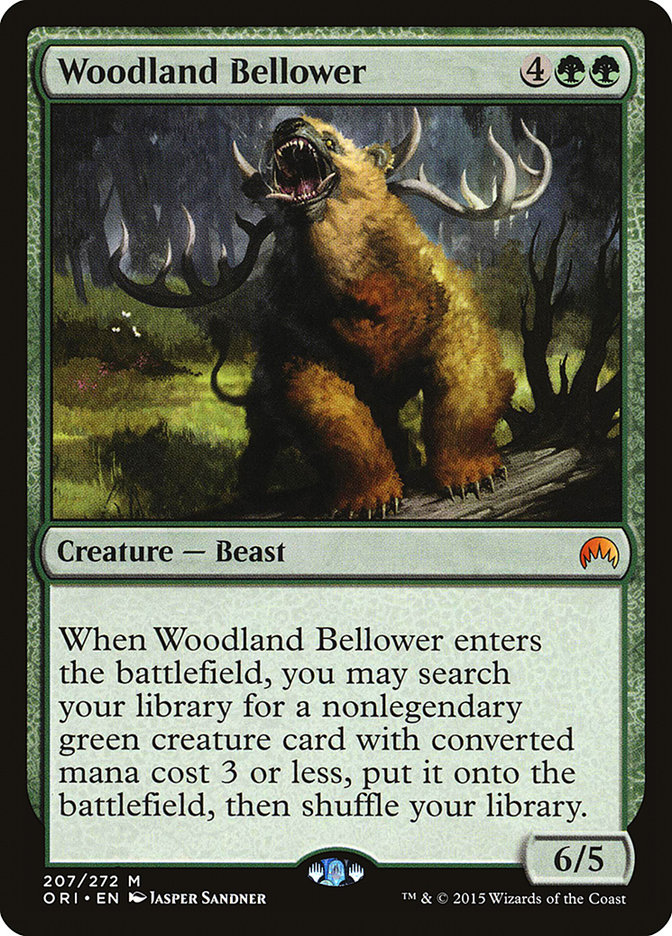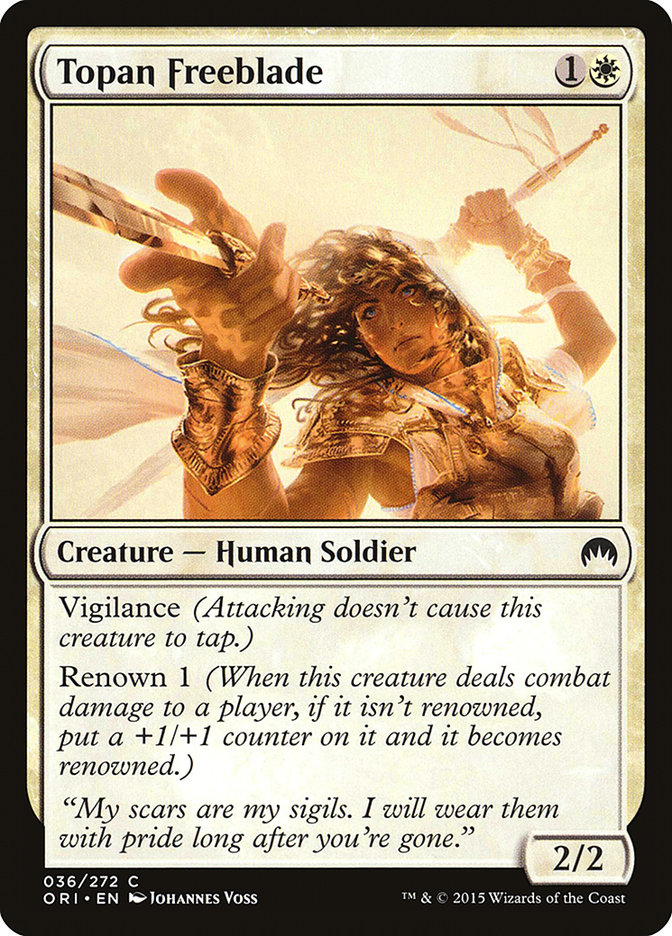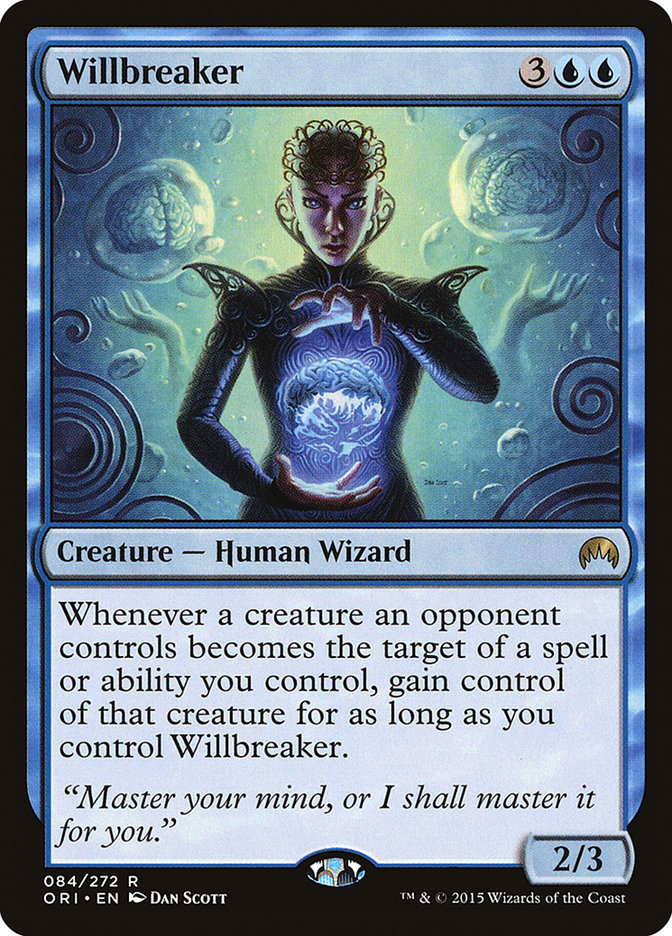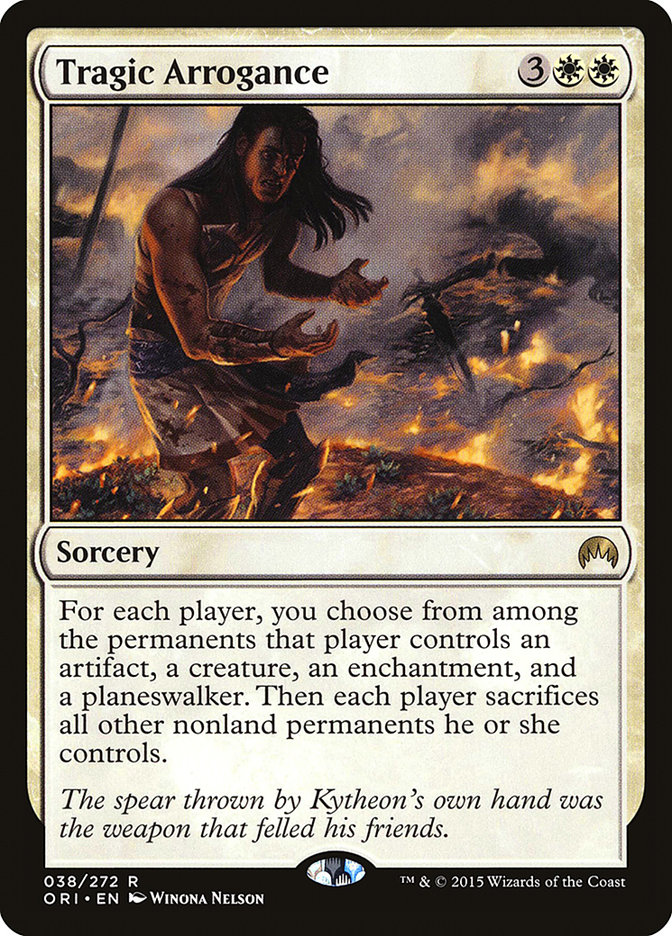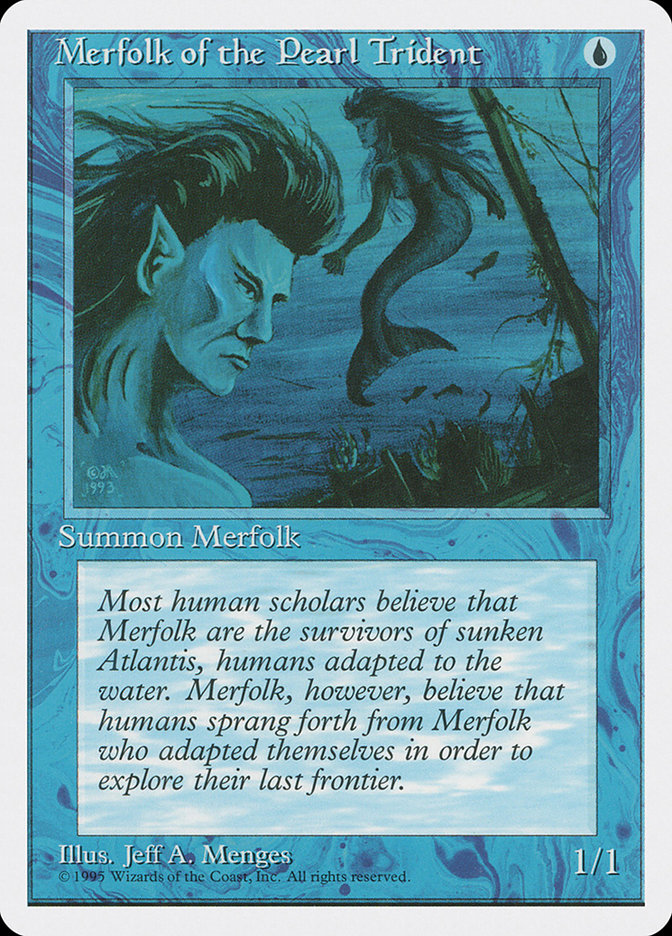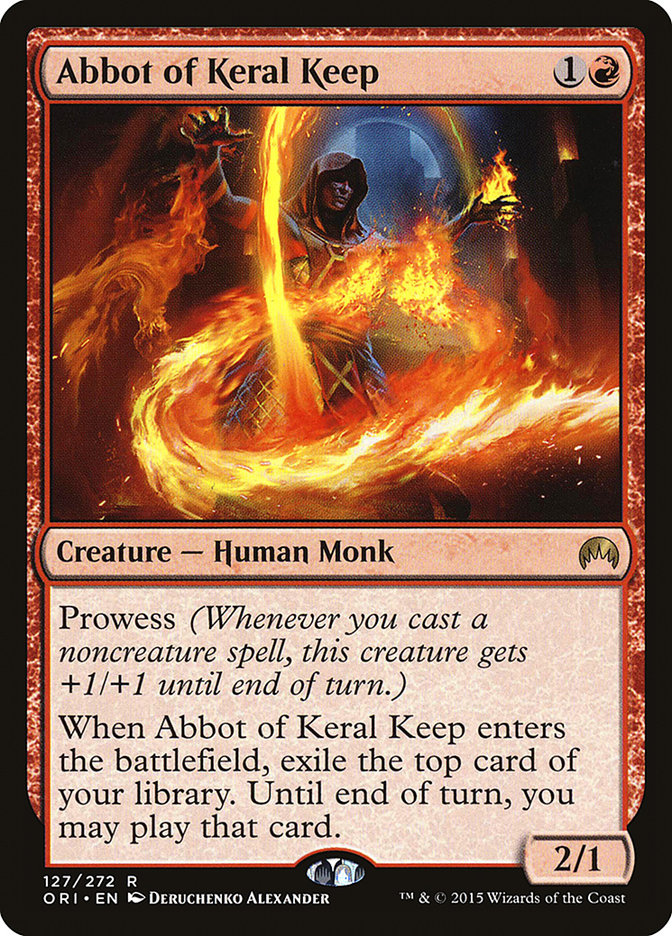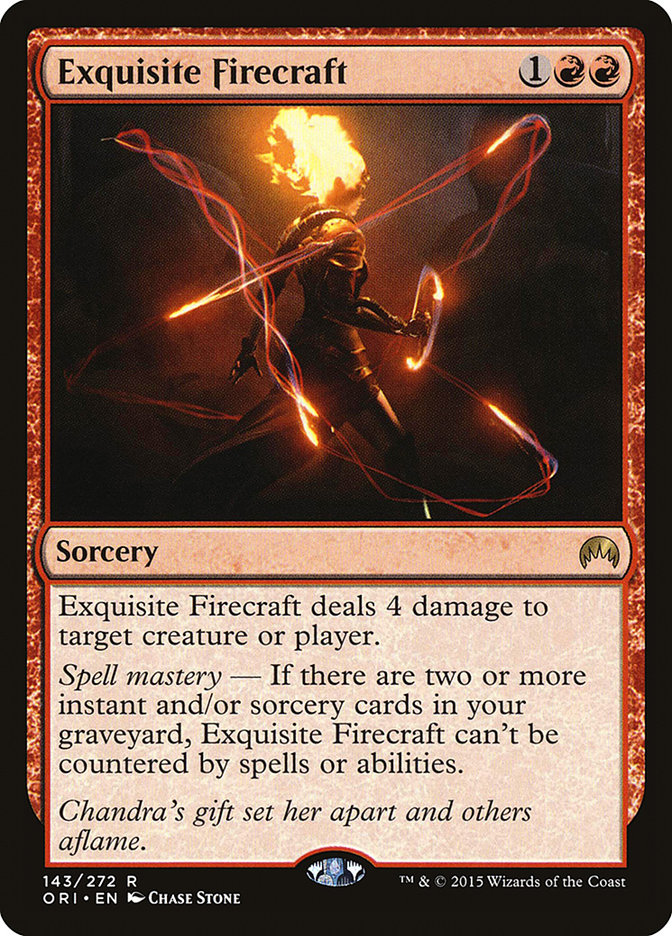If you had told me at the beginning of this season that I would be a Gold Pro, I would have jumped at it.
After Pro Tour Dragons of Tarkir in Brussels, there was no reason to assume I would make Platinum, but there was every reason in the world to consider making the attempt. The potential payoffs were huge, and, if nothing else, it would be an opportunity to grow as a player.
It takes 46 points to become a Platinum Pro. I ended well short of that, with 37 points (54th in the world), walking into Pro Tour Magic Origins with 34, locked for Gold, and needing a very high finish, 11-3-2 or better, to make the goal. That was practically tied for Top Eight. Selecting the right deck, drafting well – these would be critical.
Draft Prep
I felt actually very strong about Limited. The Madison, Wisconsin contingent of players takes Limited preparation very seriously, and this time was no different. The moment Magic Origins was available, live drafts were abundant, and I immersed myself in a few different formats at the Prerelease, including Two-Headed Giant. Now, you may think that doing a Two-Headed Giant Sealed tournament would be a waste of my time, but in my opinion one of the most important things to do at the very beginning of a format is just get as much exposure to different cards as possible to help you form your opinion of them.
Now, some cards are going to be beyond absurd in Two-Headed Giant.
Putting a small weight on the scales in terms of evaluation of some cards is just fine if you recognize that Managorger Hydra is absolutely insane in that format, and while this might gives hints as to what it is like in another format, it isn’t a perfect representation. Some cards are even more dramatic in these regards: Rabid Bloodsucker is actually an incredibly good card for an aggressive deck, but is quite mediocre if not poor in an individual draft deck. The point in a format like this isn’t to try to “learn Limited” from it, because that is what draft is for; the point is to get more exposure to all kinds of cards so that you can have your eyes open for opportunities for cards to shine. Seeing Displacement Wave have an incredible effect shouldn’t tell you that the card is incredible, but it should let you keep in mind that the card has potential situations that might be impressive, and it will help you keep your mind open as you draft further.
By the time Magic Online had Magic Origins, there was a pretty strong consensus among the Madison crew about what was good and what wasn’t. The garbage bags were filled to the brim with card wrappers and broken-down Magic Origins boxes. Our prep isn’t just playing a ton of drafts, though – it is a bunch of people who take Limited seriously and who have put drafting foremost in their Magic culture getting together to draft, and to talk about what is working and not working. It is watching each other try cards out, and trying to determine if there is anything to them. It is learning how many people at a table can successful draft, say, the color blue – or whether one archetype is preferable to another.
One of the things that felt fairly frustrating with this draft prep as opposed to previous draft preps, is that it felt like Madison didn’t really have the edges that it normally did. Take these two cards:
In Dragons of Tarkir, the Madison crew had Stampeding Elk Herd as head and shoulder above Lurking Arynx. There were a lot of reasons for this. First of all, it was an incredibly efficient, huge body. But, most importantly, at five mana, Stampeding Elk Herd would often guarantee Formidable where Lurking Arynx often wouldn’t. In addition, when Stampeding Elk Herd didn’t create Formidable, it was still an important creature on the board while Lurking Arynx wasn’t. While Madison had reached this conclusion, many other well-known pros felt like Lurking Arynx was better, if only slightly – a far cry from our view that Lurking Arynx wasn’t even in the same league as Stampeding Elk Herd.
One of my worries for Magic Origins is that it mostly seemed like people largely agreed. William Jensen had some articles up about draft and, nearly always, we all agreed with his assessments. This meant, in many ways, that the card evaluations were much more on-the-nose, and that the edges for Madison and for Team Ultra PRO were simply going to be smaller. We’d potentially have more edges on the specifics of archetypes, but even these could disappear quickly, given that each of the major archetypes based on color combination were largely telegraphed by their gold card.
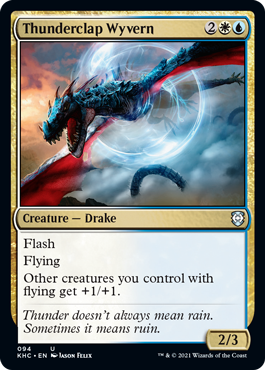
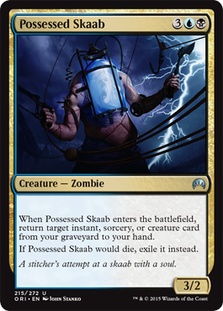
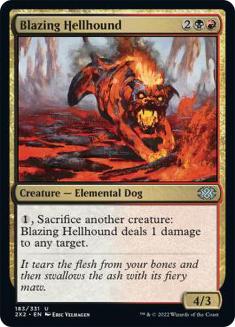
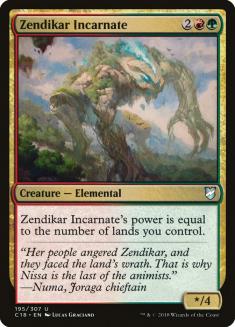
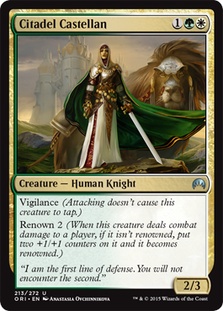
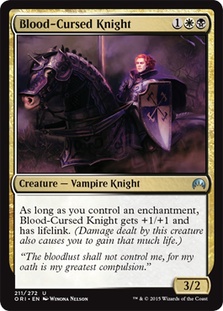
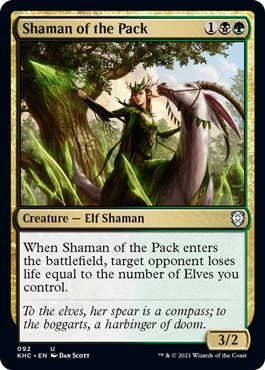
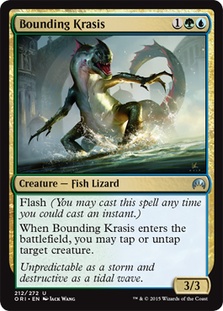
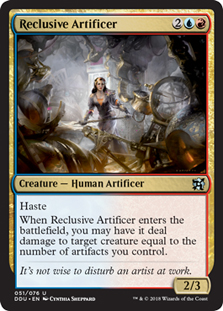
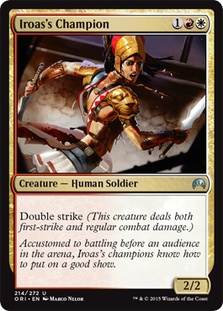
Further, one of the things that I figured out for draft in Dragons of Tarkir was that I wanted to be attacking. While not all of the decks even used Formidable, “I was winning with and losing to decks that were designed to push Formidable, get it as quickly as possible, and attack, attack, attack.” B/U was the default ‘best deck’ according to most people for this draft format, but I kept finding myself in the position where I would let the incredible B/U draft go right past me, and I’d 3-0 with some Gore Swine and a Spidersilk Net. At its most dramatic, in a Magic Online draft, I passed a Silumgar’s Scorn for a Sabretooth Outrider, easily 3-0ing the draft, and handily defeating the B/U deck in the finals in two quick games.
What I was finding difficult in the lead-up to Pro Tour Magic Origins was that, unlike for Dragons of Tarkir, I didn’t know when to go for certain archetypes over the most powerful cards. It could be summed up with this choice in the very first pack of the draft:
Without question, Woodland Bellower is the stronger card. It truly is a monster of a card, sometimes providing nine power in two bodies, often turning the game on its head. It is also green, my least favorite color in Magic Origins. Topan Freeblade, on the other hand, was a two-drop… and a powerful two-drop at that. Topan Freeblade could be the beginning of a powerful W/R Aggro deck or a W/U Skies-style deck even though it doesn’t fly. Even if it were in a less-compelling color combination, like W/B (of whichever variety), it wouldn’t be asserting for a green deck, all of which were generally fine, but none of which were exemplary.
But, Topan Freeblade is no Woodland Bellower. Topan Freeblade is a great card, and Woodland Bellower is an incredible card.
In addition, though, one of the things I’d felt was a potential lesson of all of the work so far was that you really, really need to have truly powerful cards in your deck. No matter what your archetype, you could easily lose to someone who simply dropped something amazing if you didn’t have something to help pull things back in your favor. At the very least, Woodland Bellower was a truly powerful card, and while I didn’t really care for the various green decks, I wanted to have access to a great card and I didn’t mind simply abandoning it if another deck made itself known.
Ultimately, I ended up in G/U (Semi-)Tempo, and if I were to rate my deck, I’d give it a B- or maybe even a C+. I feel like the entirety of my Pro Tour Magic Origins experience can be summed up by this anecdote from the first game:
I was taking over the game with Willbreaker, when my opponent cast Tragic Arrogance.
Ouch.
I slogged out the second game and won as quickly as I could. In the third game, I was faced with a choice on about turn seven: do I go for the kill, or do I hold back in case my opponent has a Tragic Arrogance again? I thought about it a long time, and after looking at the board, I just felt like I couldn’t expect to win even after the Tragic Arrogance if I held back. I had to just go for it and hope he didn’t have anything. Willbreaker was already out, and it had stolen something decent, and a Tragic Arrogance hadn’t happened yet, but if I waited, maybe it would.
I cast Woodland Bellower, fetched up a Bounding Krasis, stole a huge green monster from my opponent, and said go. He would be dead on the next turn.
Ouch, ouch, ouch.
I ended up going 1-2 in the draft. Two fellow Madisonians were also in the draft, Daniel Cechetti and Stephen Neal, and somehow we all managed to dodge each other, though none of us went 3-0.
Constructed
This was a difficult event to be preparing for as well.
Fairly early on, Team Ultra PRO had settle on a very powerful Mono-Red Aggro deck built with the classic 1995 proportions of 20/20/20: 20 land, 20 spells, 20 creatures. Just before the Pro Tour, things were being tuned with an expectation of Abzan Control, G/R Devotion, other red aggro decks, and Abzan Rally decks. I think we did a pretty great job of figuring out where the metagame was, with one glaring omission.
We missed the U/R Thopters decks.
This is a pretty big deal.
It wasn’t that we had exactly missed it. Sam Black had been working on a U/R Hangarback Walker/Thopter Spy Network list, and Craig Wescoe had been working on an aggressive red Hangarback Walker list, and if we married the two of them together I think we actually would have had a pretty incredible list. However, it was just something that didn’t end up happening, and I think it was Team Ultra PRO’s biggest mistake.
As it was, this ended up being one of the more popular deck types, and that exacerbated the problem I ran into with my selection.
I didn’t end up playing Team Ultra PRO’s red deck. Here is our top finisher, Pat Cox, build:
Creatures (19)
Spells (41)

This deck was truly great, and I was definitely thinking hard about playing it. One of the big sticking points for me, though, was G/R Devotion. The G/R Devotion matchup could be difficult for Mono-Red, and it was an absolute cakewalk for U/B Control.
It started coming down to numbers. What did I think was the likely metagame? Ultimately, I thought it was going to be this:
1st: G/R Devotion
2nd: Abzan Control
3rd: Mono-Red
4th: everything else, distantly back
In that world, it just felt like I’d rather be playing a deck that would be excellent against the top two decks, and be able to sideboard such that the full matchup versus Mono-Red would be better than 50/50.
Here is what I registered:
Planeswalkers (6)
Lands (24)
Spells (30)

I went 0-3 with this deck before dropping.
I still don’t actually think the deck was bad. Things just went bad. Very, very bad.
In my first round, I was paired against U/R Thopters, and I knew by turn two that I was probably going to lose the match. The only time I had a similar feeling so strongly was against Alex Borteh in US Nationals about fifteen years ago. We were playing Standard, and he opened up with this card:
I was playing Mono-Blue Control back then, and I knew I was going to lose, right there, on turn one of our match. Why?
There is no more lopsided matchup than a rational aggro-control deck versus a control deck. Basically, if the aggro-control deck is at all good, what will happen is that you’ll end up under a lot of life pressure and then a few well-timed counterspells will stop you from surviving their assault. Seeing a U/R land on the battlefield, seeing a Hangarback Walker on the battlefield, I knew it was done. Not only was I in a classic archetype mismatch, not only did I not have any playtesting against this deck, but I was also playing against a deck that would have access to a huge number of excellent anti-control cards in the form of Disdainful Stroke, Negate, and Stubborn Denial.
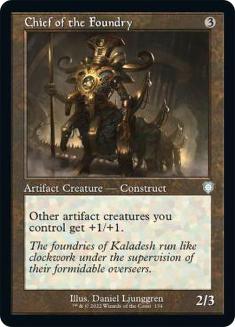
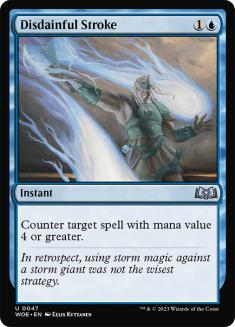
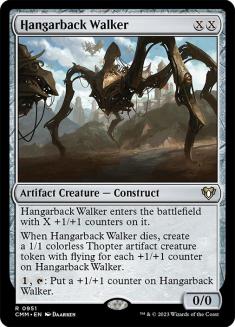
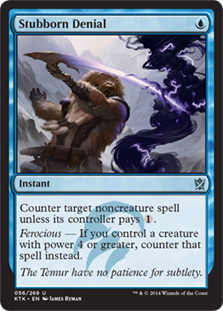
What it boiled down to was if he wanted to beat me, he would, unless I got very lucky.
And so I lost, and found myself at 1-3, needing to not lose any more rounds at all if I hoped to make Platinum.
And then I lost my next two rounds, both against other U/B Control decks, both running a huge number of Thoughtseize main (one cast four against me in game one), in, to my mind, a clear display of their misunderstanding of the metagame. I actually like how my deck was positioned overall, excepting my failure to assess the existence of U/R Thopters, and I couldn’t imagine piloting a U/B Control deck with Thoughtseize maindeck in the world I was expecting.
Alas, for me, it was certainly going to be something that would be devastating.
After I got the final loss I could take before being eliminated from potential Day Two contention, I dropped. At 1-5, this was the worst Pro Tour performance of my career, and I think that I could have certainly done better. I think I had a great handle on the draft, but it could have been better. I think that I mis-assessed the metagame, and I should have imagined that more people would have found how great Mono-Red was – after all, it had two of the best cards in Magic Origins.
Now, it’s the end of the season and it’s time to look forward.
Looking Forward
I’m now Gold. This puts me in a good position to try to make another strong run for Platinum next year. I didn’t attend all of the Pro Tours this year, nor did I even begin attending a lot of the Grand Prix until the season was mostly over. A collection of solid finishes could get me to Platinum next year.
What I’m thinking about with this is that at the beginning of the season, with my invitation to Honolulu secured, my only goal, quite honestly, was just to do well, and get invited back to the Pro Tour. I achieved that goal and then some. Now I’m in a position to try for more.
I never presumed that I would certainly “just make” Platinum. I knew it was going to be a struggle, and I knew that I might well not succeed. The thing was that it had become a goal, but it became a goal so late in the season that I would be hard-pressed to achieve it even though it was certainly possible.
I made many mistakes along the way. In two different Grand Prix, I made mistakes that cost me either a single Pro Point or even two, taking me from three points to one. I think there were also some mistakes in approach that, at times, meant I wasn’t fully mentally connected to where I needed to be to succeed.
One of the important things is that I can see these problems, and I care to do something about them. There are probably other problems that I’m carrying along with me that I can’t see (yet). Ultimately, this is a growth process, but I’m dedicated to that process and that means a lot.
It’s only about ten weeks until the next Pro Tour in Milwaukee. As I write this, it is about ten days until the Team Limited Grand Prix in Detroit. I’m already looking towards these events, and the many others, and I’m making my plans – in terms of logistics, yes, but also in terms of as a player.
I’ve been playing Magic on the Pro Tour for a long time, and I spent a long time after getting back to playing just trying to get as good as I once was, at my apex around 1999-2001. Now I’m at the point where I’m trying to be better than I’ve ever been.
And that is a lifelong goal… but it is a worthy one.
See you in Detroit. See you in Oklahoma City. See you in Madison.
See you in Milwaukee.


